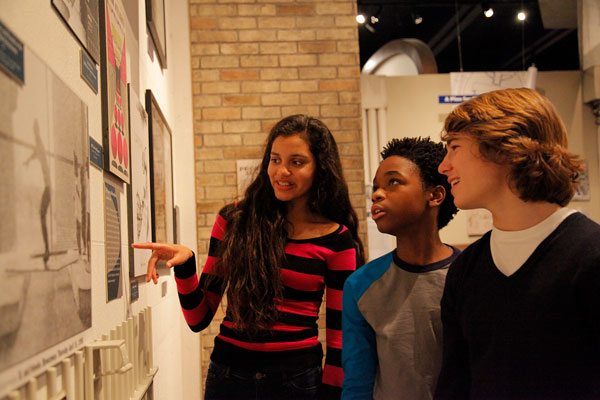
December 1, 2017; Next City
This week, the Ford Foundation and the Walton Family Foundation announced that they will each commit $3 million to “support creative solutions to diversify curatorial and management staff at art museums across the United States.”
A study from the Mellon Foundation found that “Non Hispanic [sic] White staff continue to dominate the job categories most closely associated with the intellectual and educational mission of museums”; white staff hold 84 percent of these positions. In May, NPQ’s Ruth McCambridge noted that “the field’s deep lack of diversity and inclusion in leadership positions reflects a lack of commitment as would be reflected in prioritization of action related to the issue.”
The two foundations are engaging 20 museums in curating more diverse leadership, with the goal of achieving 30 percent mid- and senior-level leadership by people of color by 2025. This would bring it closer in line with the US population, which is only 61.3 percent non-Latinx white, according to the US Census Bureau.
The Diversifying Art Museum Leadership Initiative funding examples include:
- Andy Warhol Museum, in Pittsburgh, PA, for a multi-tiered pipeline project including a youth outreach program, internships, and alumni and mentoring programs.
- Cleveland Museum of Art, in Cleveland, OH, for a Curatorial Arts Mastery program, career apprenticeships for undergraduate students from Historically Black Colleges and Universities, and research fellowships.
- The Studio Museum in Harlem, in New York, NY, for high school, college, and graduate internships, trainings for museum educators, professional development, and a curatorial fellowships partnership with the Museum of Modern Art.
The development of equitable arts and leadership opportunities for people of color is familiar territory for the Ford Foundation, but not for the Walton Family Foundation, which has traditionally focused on K-12 education and ocean sustainability. Alice Walton, a board member, is a “committed patron of the arts,” but Walton’s board lacks the diversity of Ford’s, which makes it hard to see how they will authentically lead a diversity initiative. Previous efforts by the Walton Family Foundation to engage community partners in their school choice initiatives have fallen flat, but hopefully this effort will involve more actual input from affected communities.
Sign up for our free newsletters
Subscribe to NPQ's newsletters to have our top stories delivered directly to your inbox.
By signing up, you agree to our privacy policy and terms of use, and to receive messages from NPQ and our partners.
It may be valuable for these initiatives to keep in mind the findings of Building Movement Project’s leadership report, “Race to Lead: Confronting the Racial Leadership Gap,” which NPQ’s Cyndi Suarez covered back in June. The report found that “while many investments in people of color leadership focus on training and other capacity building for people of color, the real need for capacity building is with the people who hire for executive leadership positions.” In other words, people of color had the requisite training and the desire to serve, so the change required was not in the preparation of candidates, but in the attitudes of hiring committees.
However, Mellon Foundation report authors Roger Schonfeld, Mariët Westermann, and Liam Sweeney found that the situation is a little different in art museums:
There is no…“youth bulge” of staff from historically underrepresented minorities in curatorial, education, or conservation departments. The percentages of staff from underrepresented communities in such positions are basically level at 27.5% across the different age cohorts born from the 1960s to 1990s. Therefore, even promotion protocols that are maximally intentional about the organizational benefits of diversity are not going to make museum leadership cohorts notably more diverse if there is no simultaneous increase in the presence of historically underrepresented minorities on museum staff altogether, and particularly in the professions that drive the museum’s programs in collection development, research, exhibitions, and education. This finding suggests that diverse educational pipelines into curatorial, conservation, and other art museum careers are going to be critical if art museums wish to have truly diverse staff and inclusive cultures.
The Diversifying Art Museum Leadership Initiative is designed to provide just those pipelines by funding positions and development at multiple levels at museums all across the country, ideally overriding potential tokenism or isolation.
The initiative goes one step further by requiring museum stakeholders and donors to invest equally in the development of racially equitable leadership. According to Next City, “Grant recipients will need to match every $2 of grant money with a dollar of their own for the first year, and match the foundations on a one-to-one basis for the two years following.” That means in order to keep their funding from the initiative, museums will need to engage their funders and communities on this issue, and commit to equitable representation as part of the identity they present to stakeholders.
Ford Foundation President Darren Walker said, “The arts play an essential role in our society by inspiring people of all ages to dream and to imagine new possibilities for themselves, their communities, and the world.” With support from Ford and Walton, museums are imagining some new possibilities themselves.—Erin Rubin











